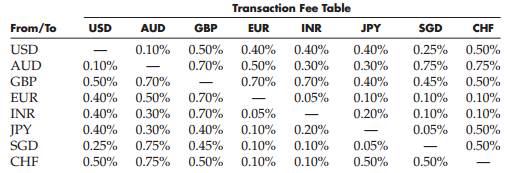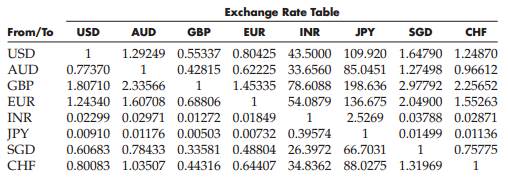
The world’s Largest Sharp Brain Virtual Experts Marketplace Just a click Away

Levels Tought:
Elementary,Middle School,High School,College,University,PHD
| Teaching Since: | May 2017 |
| Last Sign in: | 305 Weeks Ago, 6 Days Ago |
| Questions Answered: | 66690 |
| Tutorials Posted: | 66688 |
MCS,PHD
Argosy University/ Phoniex University/
Nov-2005 - Oct-2011
Professor
Phoniex University
Oct-2001 - Nov-2016
Hamilton & Jacobs
Â
Hamilton & Jacobs (H&J) is a global investment company, providing start-up capital to promising new ventures around the world. Due to the nature of its business, H&J holds funds in a variety of countries and converts between currencies as needs arise in different parts of the world. Several months ago, the company moved $16 million into Japanese yen (JPY) when one U.S. dollar (USD) was worth 75 yen. Since that time, the value of the dollar has fallen sharply, where it now requires almost 110 yen to purchase 1 dollar. Besides its holdings of yen, H&J also currently owns 6 million European euros and 30 million Swiss francs (CHF). H&J’s chief economic forecaster is predicting that all of the currencies it is presently holding will continue to gain strength against the dollar for the rest of the year. As a result, the company would like to convert all its surplus currency holdings back to U.S. dollars until the economic picture improves. The bank H&J uses for currency conversions charges different transaction fees for converting between various currencies. The following table summarizes the transaction fess (expressed as a percentage of the amount converted) for U.S. dollars (USD), Australian dollars (AUD), British pounds (GBP), European euros (EURO), Indian rupees (INR), Japanese yen (JPY), Singapore dollars (SGD), and Swiss francs (CHF).

Because it costs differing amounts to convert between various currencies, H&J determined that converting existing holdings directly into U.S. dollars may not be the best strategy. Instead, it might be less expensive to convert existing holdings to an intermediate currency before converting the result back to U.S. dollars. The following table summarizes the current exchange rates for converting from one currency to another.

The exchange rate table indicates, for instance, that one Japanese yen can be converted into 0.00910 U.S. dollars. So 100,000 yen would produce $910 USD. However, the bank’s 0.40% fee for this transaction would reduce the net amount received to $910 (1 - 0.004) = $906.36. So H&J wants your assistance in determining the best way to convert all of its non-U.S. currency holdings back into U.S. dollars.
1. Draw a network flow diagram for this problem.
2. Create a spreadsheet model for this problem and solve it.
3. What is the optimal solution?
4. If H&J converted each non-U.S. currency it owns directly into U.S. dollars, how many U.S. dollars would it have?
5. Suppose H&J wants to perform the same conversion but also leave $5 million in Australian dollars. What is the optimal solution in this case?
Â

Hel-----------lo -----------Sir-----------/Ma-----------dam-----------Tha-----------nk -----------You----------- fo-----------r u-----------sin-----------g o-----------ur -----------web-----------sit-----------e a-----------nd -----------acq-----------uis-----------iti-----------on -----------of -----------my -----------pos-----------ted----------- so-----------lut-----------ion-----------.Pl-----------eas-----------e p-----------ing----------- me----------- on-----------cha-----------t I----------- am----------- on-----------lin-----------e o-----------r i-----------nbo-----------x m-----------e a----------- me-----------ssa-----------ge -----------I w-----------ill----------- be-----------